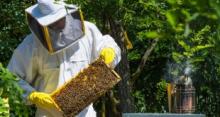The varroa mite is a significant threat to bee populations worldwide, causing significant harm to bee colonies and honey production. These tiny parasites attach themselves to the bees and feed on their blood, weakening the bees and making them more susceptible to diseases. If left untreated, varroa mite infestations can lead to colony collapse, resulting in the loss of the entire hive. In this article, we will discuss some effective varroa mite treatment strategies that beekeepers can use to keep their hives healthy and thriving.
Understanding Varroa Mites
Before discussing varroa mite treatment strategies, it is important to understand the nature of these parasites. Varroa mites are external parasites that live on the bodies of honey bees, feeding on their blood. They attach themselves to the bee's body and can weaken the bee's immune system, making them more susceptible to viruses and diseases. Varroa mites reproduce quickly, and their populations can rapidly grow and become overwhelming if not treated.
Varroa Mite Treatment Strategies
There are several effective strategies for treating varroa mites, including
Chemical Treatments: One of the most common methods of varroa mite treatment is through the use of chemical treatments. These treatments are designed to kill the mites and are typically applied directly to the bees or the hive. However, some beekeepers are concerned about the potential health risks associated with using chemicals and prefer more natural treatment methods.
Natural Treatments: Natural treatments for varroa mites involve the use of essential oils and plant extracts, such as thyme, eucalyptus, and tea tree oil. These treatments can be applied directly to the hive or used in conjunction with other treatments, such as sugar dusting.
Sugar Dusting: Sugar dusting is a simple and effective method for treating varroa mites. It involves dusting the bees with powdered sugar, which coats the mites and causes them to lose their grip on the bees, eventually falling off. This treatment can be repeated several times throughout the season to keep mite populations under control.
Prevention Strategies
In addition to treatment strategies, there are also several preventative measures that beekeepers can take to reduce the risk of varroa mite infestations, including
Regular Monitoring: Regular monitoring of bee hives is critical for identifying varroa mite infestations early on. This allows beekeepers to take action before the infestation becomes severe.
Hive Management: Proper hive management, including keeping hives clean and well-maintained, can help reduce the risk of varroa mite infestations. This includes regular hive inspections, cleaning equipment, and using foundation wax that has been sterilized.
Genetics: Some bee breeds have shown resistance to varroa mites, making them less susceptible to infestations. Beekeepers can select these breeds to help reduce the risk of mite infestations.
Conclusion
Varroa mites are a significant threat to honey bee colonies worldwide. However, with the right treatment and prevention strategies, beekeepers can keep their hives healthy and thriving. By regularly monitoring hives, using effective treatment strategies, and implementing preventative measures, beekeepers can significantly reduce the risk of varroa mite infestations and promote the health and well-being of their honey bees.
